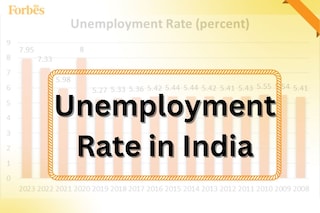Unemployment rate in India (2008 to 2025): Current rate, historical trends and m...
What is the current unemployment rate in India? How about the unemployment rate in the last ten years? Let's find out


Unemployment is a critical issue that continues to challenge the economic landscape of India. As one of the world"s most populous nations with a diverse workforce, fluctuations in the unemployment rate have far-reaching implications for the country"s growth and development. So, what is the current unemployment rate in India?
According to the India Employment Report 2024, created jointly by the Institute for Human Development and the International Labour Organisation (ILO), India"s working population increased from 61 percent in 2011 to 64 percent in 2021, and it is projected to reach 65 percent in 2036. However, the percent of youth involved in economic activities declined to 37 percent in 2022. Continued vigilance and effective policy measures remain crucial to foster sustainable job growth and secure the nation"s future prosperity.
In this blog, we discuss the current unemployment rate in India a little more in-depth, along with the unemployment rate in the last ten years.
The numbers cannot be compared since the methodology differs for both. PLFS considered 7511 first-stage sampling units during May 2025. The number of households surveyed was 89,372 (49,267 in rural areas and 40,105 in urban areas), and the number of persons surveyed was 3,79,600 (2,16,542 in rural areas and 2,16,542 in urban areas).
A press release by MoSPI reveals that in rural areas, the overall Labour Force Participation Rate (LFPR) among people 15 years of age and above stood at 54.8 percent in April 2025. It was 56.9 percent for rural areas and 50.4 percent in urban areas.
"In urban areas, changes were more marginal with slight declines in own-account workers and casual labourers, affecting workforce numbers. The decline in LFPR and WPR (Worker Population Ratio) and the rise in UR (Unemployment Rate) were driven largely by seasonal agricultural patterns, higher summer temperature experienced in May in some parts of the country due to which physical outdoor work gets limited and movement of some unpaid helpers to domestic chores, especially in the higher income (top 3 decile) rural households," the statement read.
These changing trends in labour demand and employment rates call for thoughtful policy measures to address the prevailing economic challenges and ensure sustainable growth in rural and urban areas. It highlights the importance of diversifying economic activities to create more employment opportunities and bolster the country"s financial resilience.
First Published: Jun 18, 2025, 16:42
Subscribe Now